Geothermal Energy: Benefits, Uses, Technology, Applications and How It Works
Key Takeaway:
Geothermal energy is a renewable, reliable, and sustainable energy source with a low environmental impact. It offers a wide range of applications, from electricity generation to heating and cooling, making it a key component in the transition to a green energy future. Despite challenges such as high initial costs and geographical limitations, the future outlook for geothermal energy is promising, with technological advancements and increased awareness likely to drive its wider adoption.
Table of Contents
The potential of geothermal energy, a renewable energy source that draws heat from the Earth’s interior, to produce clean, sustainable electricity is drawing more and more attention. Unlike other renewable energy sources that might be impacted by weather variations, this energy source provides a steady and dependable supply of electricity since it is produced from the natural heat that is stored beneath the surface of the Earth. Direct heating or power generation can be achieved by drawing hot water or steam from subterranean reservoirs using a geothermal energy system. This article will define geothermal energy, discuss its significance in relation to the world’s energy requirements, and explain its operation. We will explore the many applications of geothermal energy, ranging from the production of electricity to direct heating, and talk about the advantages it presents in terms of energy security and environmental sustainability. We can better comprehend geothermal energy’s role in the shift to a more sustainable and renewable energy future by knowing its potential.
The Science Behind Geothermal Energy
Geothermal energy uses heat from the Earth’s interior to produce heat and power. With temperatures as high as 6,000°C, the Earth’s core contains a huge store of thermal energy that was mostly produced by radioactive isotope decay and leftover heat from the planet’s genesis. The rock and water layers around are constantly warmed by this heat as it continuously radiates outward.
The first step in turning this heat into useful energy is locating geothermal reservoirs, which are regions of intense thermal activity close to the surface of the Earth. These reservoirs are made of porous rocks or fissures that hold steam and hot water. Drilling wells into the reservoirs allows hot water and steam to be drawn to the surface in order to utilize this energy.
The extracted steam in a geothermal energy plant powers turbines that are connected to generators to produce electricity. This is a geothermal electric power plant’s fundamental idea. To keep the resource alive and maintain pressure, the steam may occasionally be condensed back into water and reinjected into the reservoir. The lifetime and sustainability of the geothermal energy supply are guaranteed by this closed-loop technology.
Different geothermal energy plant designs exist, each tailored to the unique qualities of the geothermal resource. The turbines of dry steam plants are directly turned by the steam in the reservoir. The most popular kind of steam plants, called flash steam plants, use heated water under high pressure that flashes into steam when it reaches a lower pressure at the surface. In binary cycle plants, heat is transferred from the geothermal fluid to a lower boiling point secondary fluid, which vaporizes to power the turbines.
The capacity to supply base-load power—electricity that can run continuously—and minimal emissions are only a couple of the benefits of geothermal energy facilities over solar or wind power. On the other hand, the geothermal resource’s temperature, flow velocity, and depth all affect how feasible and efficient they are.
Uses of Geothermal Energy
There are many uses for geothermal energy in the production of electricity and heating due to its capacity to offer a dependable and sustainable supply of power and heat.
The generation of electricity, sometimes known as geothermal electricity, is one of the main applications of geothermal energy. This is accomplished by means of geothermal power plants, which use the heat from the Earth to produce steam, which powers turbines that are linked to generators. These plants fall into three primary categories: binary cycle, flash steam, and dry steam. Each of these categories is appropriate for a certain feature of geothermal resources. Compared to intermittent renewable energy sources like solar or wind, geothermal electricity offers a considerable advantage as a base-load power source since it provides consistent and stable energy regardless of the weather.
Geothermal energy is widely utilized for heating and cooling (sometimes referred to as geothermal heating and cooling) in addition to producing electricity. In order to offer heating in the winter and cooling in the summer, this application makes use of the stable temperatures that exist close below the surface of the Earth. A fluid is circulated via subterranean pipes by a geothermal heat pump system, which is frequently utilized in both residential and commercial settings to exchange heat with the ground. The system reverses the process in the summer, redistributing surplus heat from buildings back into the ground, while in the winter it draws heat from the ground to warm buildings. Because it uses the Earth’s constant temperature to generate heating and cooling with little energy input, this technique is incredibly efficient.
Because of its advantages for the environment and energy efficiency, residential geothermal systems have grown in popularity. Comparing these systems to traditional heating and cooling techniques can result in a considerable reduction in energy costs and greenhouse gas emissions. They are also a sustainable and affordable option for homes because of their extended lifespan and low maintenance requirements.
Advantages of Geothermal Energy
Because of its many benefits, geothermal energy is becoming more widely acknowledged as a preferable renewable energy source. The constancy and dependability of geothermal energy is one of its main advantages. Geothermal energy is a perfect base-load energy source since it can provide electricity continuously, unlike solar and wind energy, which are reliant on the weather. For the energy grid to remain stable and to continuously supply energy needs, this dependability is very important.
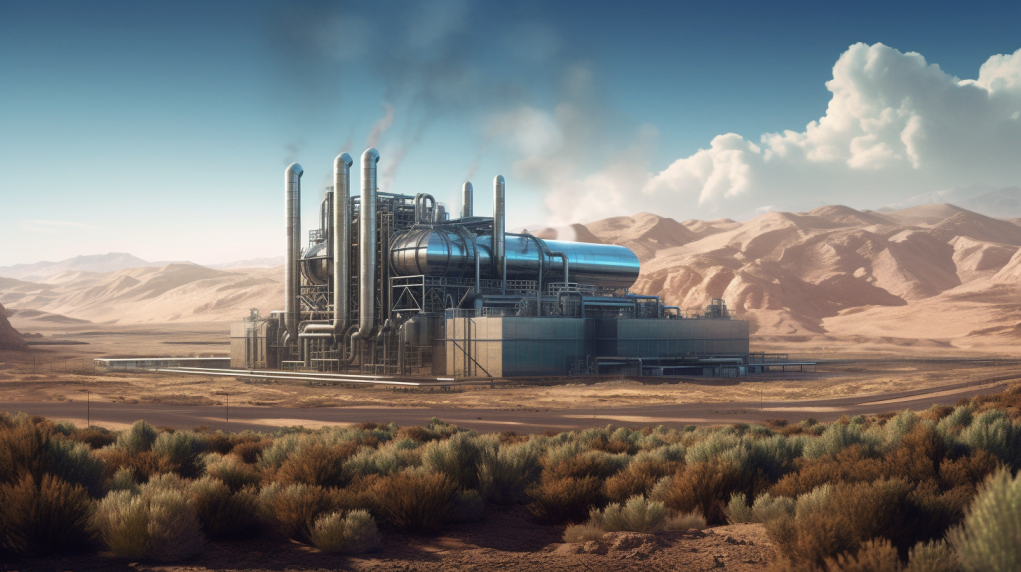
The little environmental effect of geothermal energy is another important benefit. Compared to fossil fuel-based power plants, geothermal power plants emit fewer greenhouse gases, which helps to reduce air pollution and mitigate climate change. Furthermore, the very modest land footprint of geothermal energy facilities preserves natural ecosystems and landscapes.
In the long run, geothermal energy is also very economical and efficient. Due to their large capacity factors, geothermal power plants are able to run almost continuously at full capacity. Although the initial cost of geothermal power plants and heating systems may be greater than that of conventional systems, over the course of the system’s lifetime, overall expenses can frequently be reduced due to the low operating and maintenance costs and long equipment lifespan.
Another benefit is the utilization of geothermal heat pumps to provide heating and cooling. With no influence on the environment, these systems may deliver year-round pleasant interior temperatures and drastically lower energy expenses.
Technology behind Geothermal Energy
Geothermal energy is a clean, renewable form of energy that has been used for millennia. It is produced by the natural heat of the earth’s crust, which can be reached and used to create energy via geothermal wells. In this piece, we’ll look at the science behind geothermal energy and how it can be used to generate electricity.
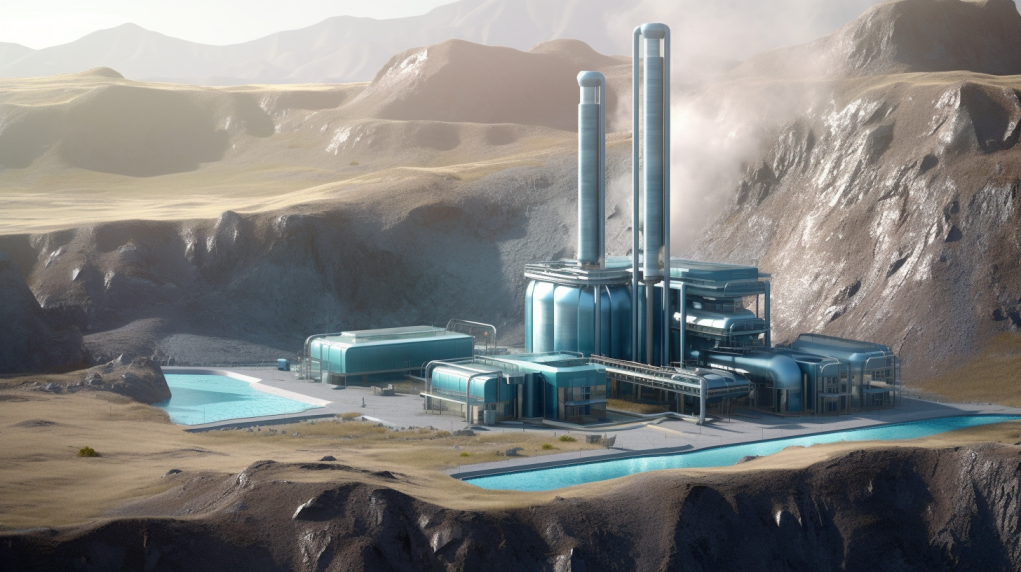
How is geothermal energy used?
Drilling wells into the earth’s crust and collecting hot water and steam from subterranean pools is how geothermal energy is utilized. This hot water and steam run turbines, which produce energy. Because the temperature of the earth’s crust rises by about 30 degrees Celsius for every kilometer of depth, drilling deep wells is required to reach the high temps required for effective energy generation.
In geothermal energy generation, two kinds of wells are used: production wells and injection wells. Production wells are used to transport heated water and steam from tanks to the surface, whereas injection wells are used to send cooled water to the earth. This procedure aids in the preservation of reservoir pressure and the long-term generation of geothermal energy.
Geothermal power station types
Geothermal power facilities are classified into three types: dry steam, flash steam, and binary cycle.
Dry steam power stations produce energy by using steam straight from underground reservoirs to power turbines. This sort of plant is only feasible in areas with a plentiful supply of high-pressure steam, making it an uncommon choice.
In contrast, flash steam power facilities use hot water from subterranean pools to power turbines. Water is pumped to a lower pressure tank, where it rapidly boils and generates steam, which is then used to create energy.
The most prevalent form of geothermal power plant is a binary cycle power plant. A heat exchanger transfers heat from heated water to a second fluid with a lower boiling point, which vaporizes and drives a turbine to produce energy.
Geothermal digging methods
Geothermal drilling methods play an important role in geothermal energy generation. In geothermal energy production, two main drilling methods are used: directional drilling and rotary drilling.
Directional drilling is the process of digging wells at an angle in order to gain more effective entry to the geothermal reservoir. This method enables numerous wells to be drilled from a single location, reducing environmental effect and boosting energy output efficiency.
In contrast, rotary drilling is a conventional drilling method that includes drilling vertically into the earth’s crust. This technique is still extensively used, especially in regions where geothermal reservoirs are easily accessible.
To summarize, geothermal energy is a significant and renewable energy source that is obtained by drilling wells into the earth’s crust and collecting hot water and vapor from subterranean sources. Geothermal power plants are classified into three types: dry steam, flash steam, and binary cycle plants. Geothermal drilling methods, such as directional drilling and rotary drilling, are essential for effectively and responsibly reaching geothermal resources. Geothermal energy has the potential to become an increasingly essential component of our worldwide energy balance with ongoing study and development.
Challenges and Disadvantages Of Geothermal Energy
Geothermal energy has many benefits, but it also has drawbacks and difficulties that must be taken into consideration.

The high upfront costs of geothermal energy projects are one of the main obstacles. Many developers may find it difficult to get started because of the large upfront costs associated with geothermal resource discovery, drilling, and development. It is also more difficult to acquire funding for these projects since there is a greater financial risk associated with the uncertainty of discovering a viable geothermal resource.
The spatial restrictions associated with geothermal energy are another drawback. Geothermal resources are generally found in locations with strong tectonic activity, such as volcanic sites and hot springs, and are not evenly distributed around the world. This implies that the broad use of geothermal energy may be limited since it may not be a practical choice in many areas.
Even while geothermal energy has a usually smaller environmental effect than fossil fuels, it is still noticeable. Greenhouse gases like carbon dioxide and methane may be released during the extraction of geothermal fluids, albeit in far less amounts than during the burning of fossil fuels. Additionally, if the drilling operation is not adequately controlled or if harmful substances are present in the geothermal fluids, there is a potential for groundwater pollution.
A further difficulty is from the possibility of induced seismicity, or earthquakes generated by humans, which can happen when fluids are injected into the ground when geothermal facilities are operating. Even though the danger is usually minimal, it is nevertheless something to be cautiously watched over and controlled.
Lastly, research is still being done on the long-term sustainability of geothermal resources. Even though geothermal energy is regarded as renewable, if extraction rates outpace natural replenishment, there is a chance of resource depletion. The long-term sustainability of geothermal energy depends on ensuring its sustainable management.
Applications of Geothermal Energy
Electricity production is one of the most prevalent uses of geothermal energy. Geothermal power facilities produce energy by harnessing heat from the earth’s core. Drilling deep into the earth’s crust is used to reach hot water and vapor confined beneath the surface. After that, the steam is used to operate turbines, which produce energy. Geothermal power plants are extremely effective and can produce electricity 24 hours a day, seven days a week, making them an excellent source of sustainable energy.
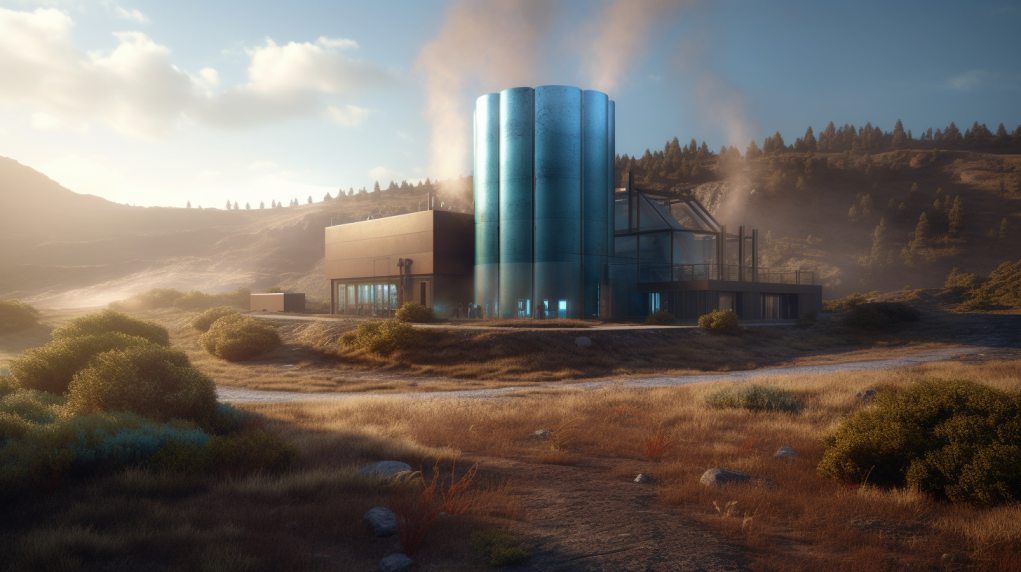
Geothermal energy can also be used to heat and chill buildings. Geothermal heat exchangers use the earth’s constant temperature to heat and cool structures. The device functions by circulating water through a network of underground pipelines. In the winter, water absorbs heat from the ground and transmits it to the structure; in the summer, the process is reversed, with heat being transmitted from the building to the earth. Geothermal heating and cooling systems are extremely efficient and can significantly reduce residents’ energy costs.
Industrial operations can also benefit from geothermal energy. Deep beneath the earth’s surface, high temps and pressures can be used to fuel industrial processes such as drying, distillation, and vaporization. Geothermal energy can also be used to fuel industrial boilers, which produce steam for use in a variety of industrial operations.
Agriculture and fishing can also benefit from geothermal electricity. The earth’s consistent temperature can be used to produce optimal growing circumstances for vegetables and fish. Geothermal gardens use heat from the ground to produce a warm, humid atmosphere perfect for vegetable growth. Geothermal aquaculture systems harness the earth’s heat to produce perfect circumstances for fish farming.
Geothermal Energy and Sustainability
In order to switch to green energy solutions and promote sustainable development, geothermal energy is essential. Geothermal energy is a sustainable energy source that comes from the Earth’s inherent heat, which is constantly renewed by radioactive isotope decay in the Earth’s mantle and core. Because of its innate renewability, geothermal energy is a vital resource in the search for environmentally friendly energy sources.
Geothermal energy’s little environmental effect is one of the main ways it promotes sustainability. Geothermal power facilities release far less greenhouse gasses, including carbon dioxide and methane, than fossil fuel-based power plants do. In order to mitigate climate change and lessen the carbon footprint of energy production, this reduction in emissions is essential. Furthermore, the modest land area of geothermal plants reduces their negative effects on ecosystems and natural habitats.
Additionally, geothermal energy improves energy independence and security. In contrast to fossil fuels, which are prone to price volatility and geopolitical unrest, geothermal resources are readily available locally and are not impacted by changes in the market. By decreasing reliance on foreign fuel imports and strengthening national energy sovereignty, this stability helps to provide a more secure and dependable energy supply.
An other example of geothermal energy’s sustainability is its usage in heating and cooling systems. For instance, geothermal heat pumps use the Earth’s constant temperature to efficiently heat and cool buildings. When compared to traditional heating and cooling systems, this technology can drastically lower energy usage and greenhouse gas emissions, improving the built environment’s sustainability.
Moreover, the creation of “geothermal greenhouses,” which use geothermal heat to maintain ideal growth conditions for plants, is facilitated by geothermal energy. This application allows for year-round agriculture in areas with difficult climates, while simultaneously encouraging local food production and lowering the carbon footprint associated with food transportation.
FAQs
What are the 3 main uses of geothermal energy?
Electricity generation: Using heat from the Earth to produce steam that drives turbines in power plants.
Heating and cooling: Utilizing geothermal heat pumps for residential and commercial heating and cooling.
Industrial and agricultural applications: Using geothermal heat for processes like drying crops, heating greenhouses, and pasteurizing milk.
Is geothermal energy good or bad?
Geothermal energy is generally considered good due to its renewable nature, low environmental impact, and ability to provide reliable and sustainable energy. However, like all energy sources, it has its challenges and limitations.
What are 3 disadvantages of geothermal energy?
High initial costs: The exploration and development of geothermal resources require significant upfront investment.
Geographical limitations: Geothermal resources are not evenly distributed and are primarily located in areas with volcanic activity or hot springs.
Environmental concerns: Although minimal, there is a risk of greenhouse gas emissions, water usage, and induced seismicity (earthquakes) associated with geothermal energy production.
Why don’t we use geothermal energy?
The limited use of geothermal energy is primarily due to geographical limitations, high initial costs, and technical challenges associated with exploration and development. Additionally, there is a lack of awareness and infrastructure in many regions to support widespread adoption of geothermal energy.
Conclusion
Finally, geothermal energy is a potential renewable energy source with numerous advantages, applications, and technical developments. Geothermal energy is a clean, renewable energy source that can help decrease greenhouse gas pollution and alleviate climate change.
Geothermal energy can be used for a variety of purposes, including power production, heating and cooling, and manufacturing operations. Geothermal energy harnessing technology has also progressed considerably in recent years, making it more efficient and cost-effective.
Despite its numerous advantages, geothermal energy confronts a number of challenges, including high initial costs, restricted supply in certain areas, and governmental obstacles. These challenges, however, can be surmounted with increased investment and support, and geothermal energy can become a major addition to the global energy balance.
As a result, increased investment and support for geothermal energy are required to expedite its implementation and optimize its potential. Governments, lawmakers, and financiers should emphasize geothermal energy as a crucial component of their energy plans, and provide benefits and financing to help it grow.



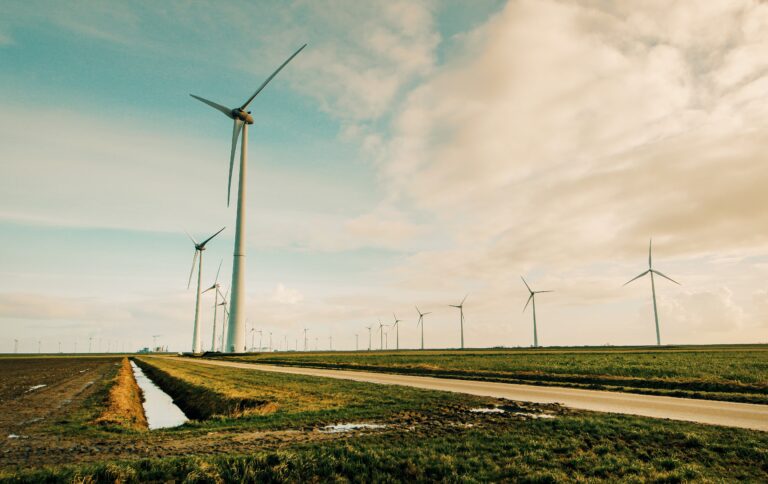

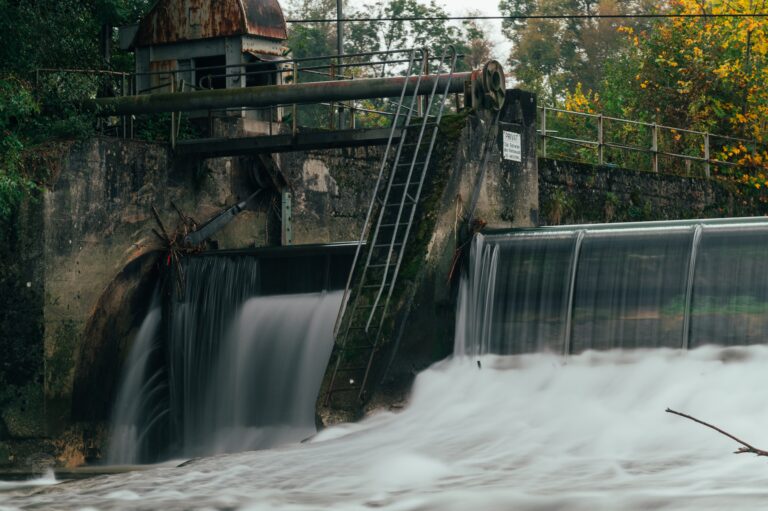
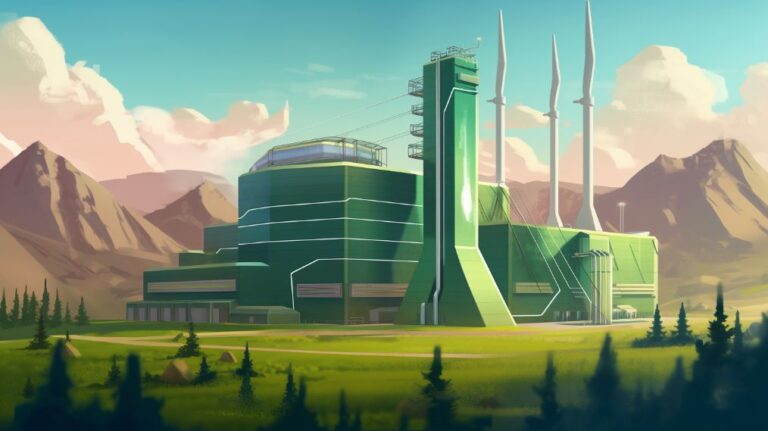
One Comment